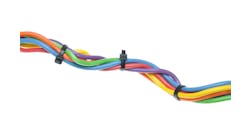Variable speed pumps can save energy when the flow is reduced. However, the turndown of the pump speed may not achievable if there is overheating at low flows, excessive sensitivity at low rpm, and cycling at high destination pressures. Special attention to variable frequency drive (VFD), motor, pump, and piping system design is necessary to achieve the rangeability associated with the energy savings. For tight control, cascade control design, input card resolution, pickup design, and drive setup is important.
One of the worst things that can happen is when the speed is turned downed so low the pump or fan discharge head drops below the destination pressure leading to a reversal of flow. This occurred in the use of variable speed pumps for reactant flow causing reverse flow of reactor catalyst into the reactant feed tanks. If this happens, variable speed pumping may not be allowed in the plant.
Overheating is often the most commonly stated reason for poor rangeability. Motor and cooling design must be addressed especially for high temperature applications, such as induced draft fans on furnaces.
Poor control often stems from attempts to do speed control in the control room, poor resolution of the standard input signal card supplied by drive manufacturers, and excessive rate limiting and deadband introduced in the drive setup. Drive manufacturers historically have not understood the consequences of deadband, precision, and dynamics on process control.
The following checklist is not intended to cover all the specification requirements but some of the major application details to be addressed. The following list assumes the prime mover (e.g. pump or fan) materials of construction have been properly specified and will work safely and reliably with acceptable pump discharge pressure for the maximum possible temperature and static head. The ISA Mentor program post “Is a VFD or Valve Faster” and the ISA book Essentials of Modern Measurements and Final Elements in the Process Industries discusses these and other considerations in maximizing the performance of variable frequency drives (VFD) for process control. Reliability, precision, and rangeability are most important.
- Is Pulse Width Modulation (PWM) drive used to reduce torque pulsation (cogging) at low speeds?
- Is a totally enclosed fan cooled (TEFC) motor used with constant speed fan or booster fan as necessary with class F insulation (inverter duty) and 1.15 service factor to prevent overheating?
- Is a totally enclosed water cooled (TWEC) motor used for high temperatures to prevent overheating?
- Is a NEMA frame B motor used to prevent steep torque curve?
- Is the pump sized to prevent operation on flat part of pump curve?
- Is a recycle valve needed to prevent cycling from operation on the flat part of pump curve for a low flow demand and is a low speed limit needed to prevent reverse flow for the highest possible destination pressure? (see "Watch out for variable speed pumping")
- Are signal input cards > 12 bit used to improve resolution limit of signal to 0.05% or better?
- Does the drive and motor have a generous amount of torque for application so speed rate of change limits in drive setup do not prevent the speed compensating for the fastest disturbance?
- Is a deadband excessively introduced in the drive setup causing delay and limit cycling?
- For tachometer control, does the number of gear teeth for magnetic pickups and discs with holes or bands with mirrors on the shafts for optical pickups provide enough pulses per revolution?
- For tachometer control, is the speed control in the VFD to prevent violation of the cascade rule where the secondary speed loop should be 5 times faster than the primary flow loop as discussed in “More Fun with PID Controllers”
- To increase rangeability to 80:1, is fast cascade control of speed to torque in VFD considered to provide closed loop slip control as described in The Control Techniques Drives and Controls Handbook, IEE Power and Energy Series 35, Cambridge University Press, 2001




